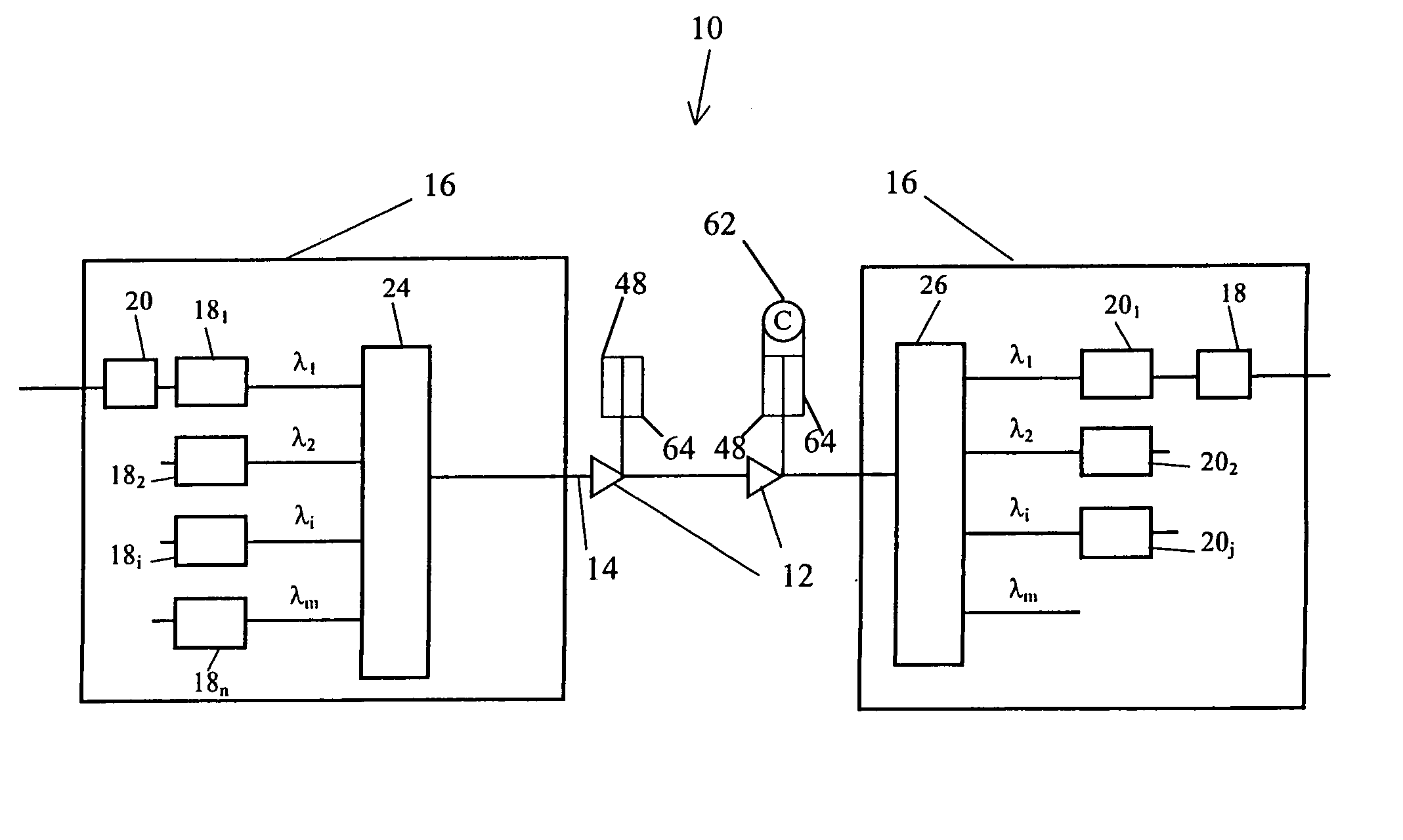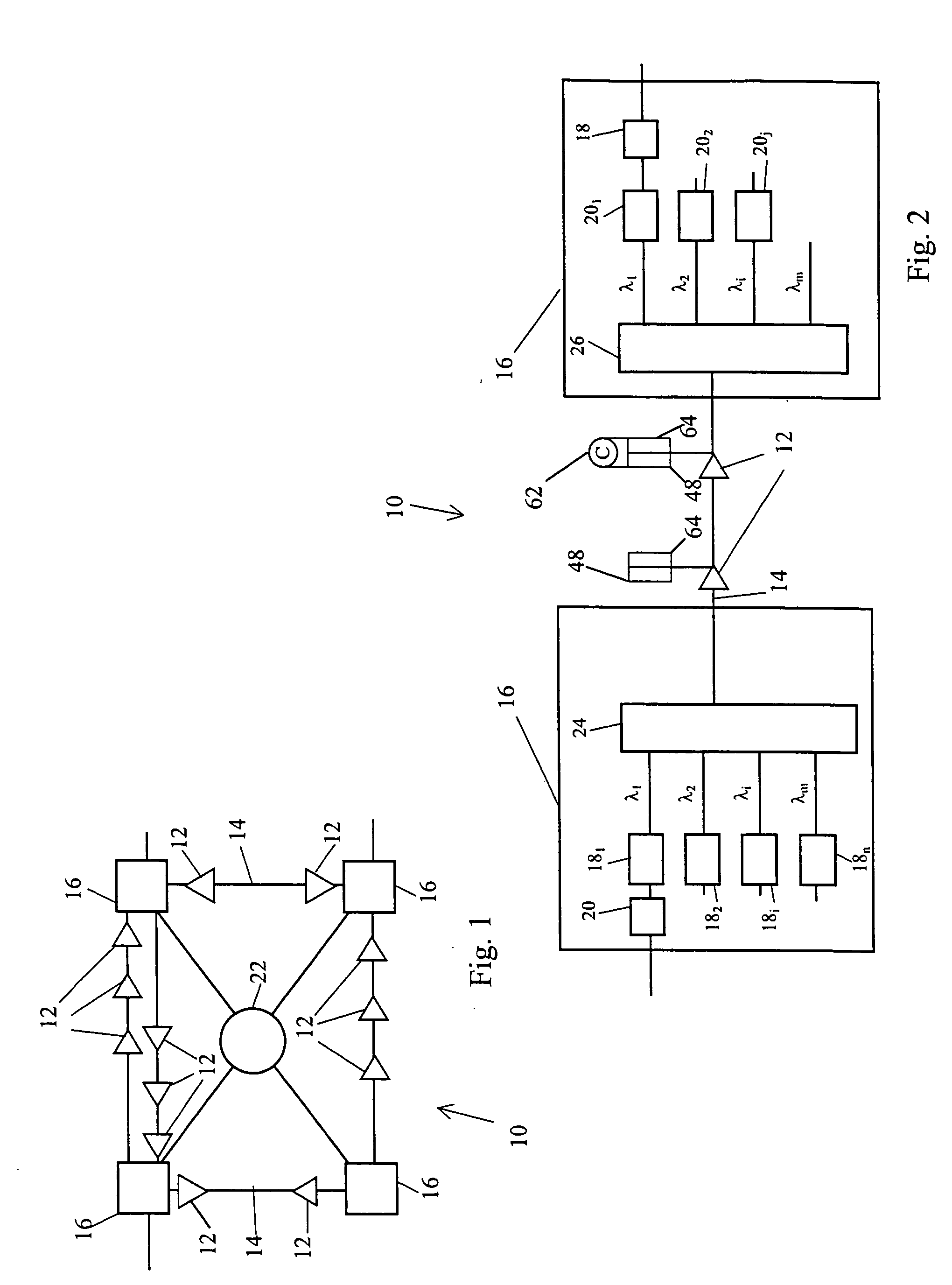Optical transmission systems including optical amplifiers and methods of use therein
a technology of optical amplifiers and optical transmission systems, applied in the direction of transmission, electromagnetic transmission, lasers, etc., can solve the problems of high cost of electrical signal regeneration/amplification equipment, not being deployed in commercial systems, and not initially deployed in optical wdm systems, etc., to improve control, flexibility, and upgradability. , the effect of increasing the control of optical systems
- Summary
- Abstract
- Description
- Claims
- Application Information
AI Technical Summary
Benefits of technology
Problems solved by technology
Method used
Image
Examples
Embodiment Construction
[0030] Optical systems 10 of the present invention include an optical amplifier 12 disposed along an optical transmission fiber 14 to optically amplify optical signals passing between optical processing nodes 16. One or more transmitters 18 can be included in the nodes 16 and configured to transmit information via the optical signals in one or more information carrying signal wavelengths, or signal channels, λi to one or more optical receivers 20 in other nodes 16. The optical system 10 can be configured in multi-dimensional networks controlled by a network management system 22 (FIG. 1) or in one or more serially connected point to point links (FIG. 2).
[0031] The optical processing nodes 16 may also include other optical components, such as one or more add / drop devices and optical switches / routers / cross-connects interconnecting the transmitters 18 and receivers 20. For example, broadcast and / or wavelength reusable, add / drop devices, and optical and electrical / digital cross connect ...
PUM
 Login to View More
Login to View More Abstract
Description
Claims
Application Information
 Login to View More
Login to View More - R&D
- Intellectual Property
- Life Sciences
- Materials
- Tech Scout
- Unparalleled Data Quality
- Higher Quality Content
- 60% Fewer Hallucinations
Browse by: Latest US Patents, China's latest patents, Technical Efficacy Thesaurus, Application Domain, Technology Topic, Popular Technical Reports.
© 2025 PatSnap. All rights reserved.Legal|Privacy policy|Modern Slavery Act Transparency Statement|Sitemap|About US| Contact US: help@patsnap.com



